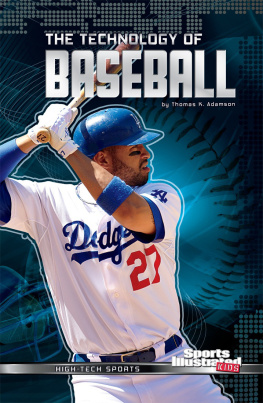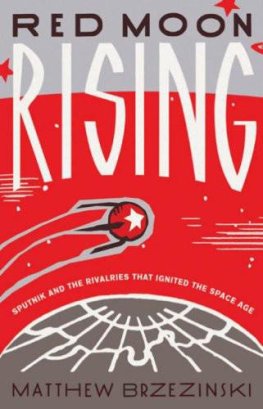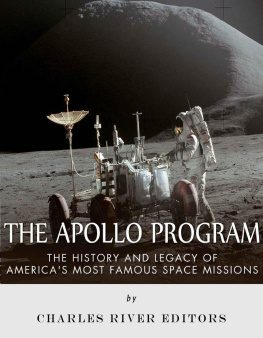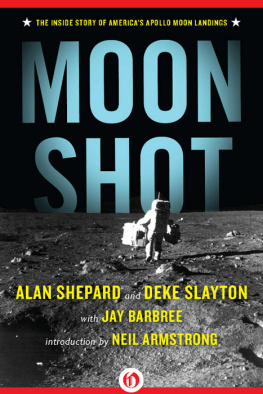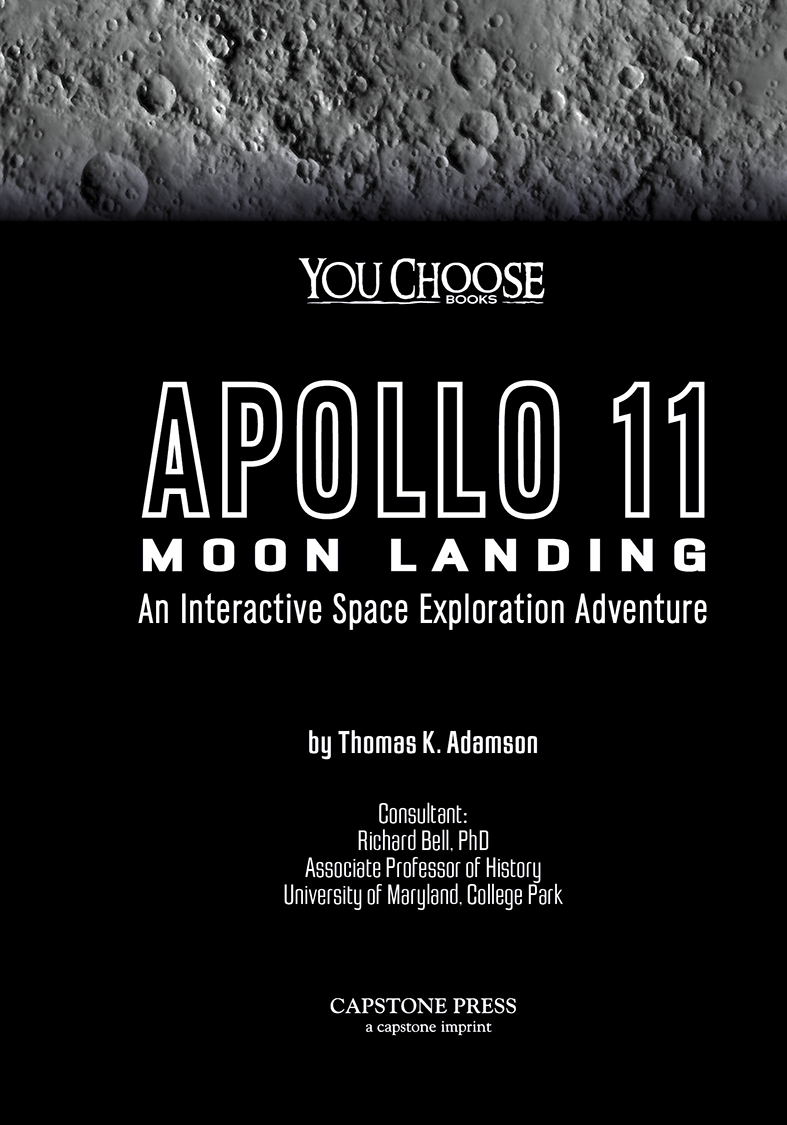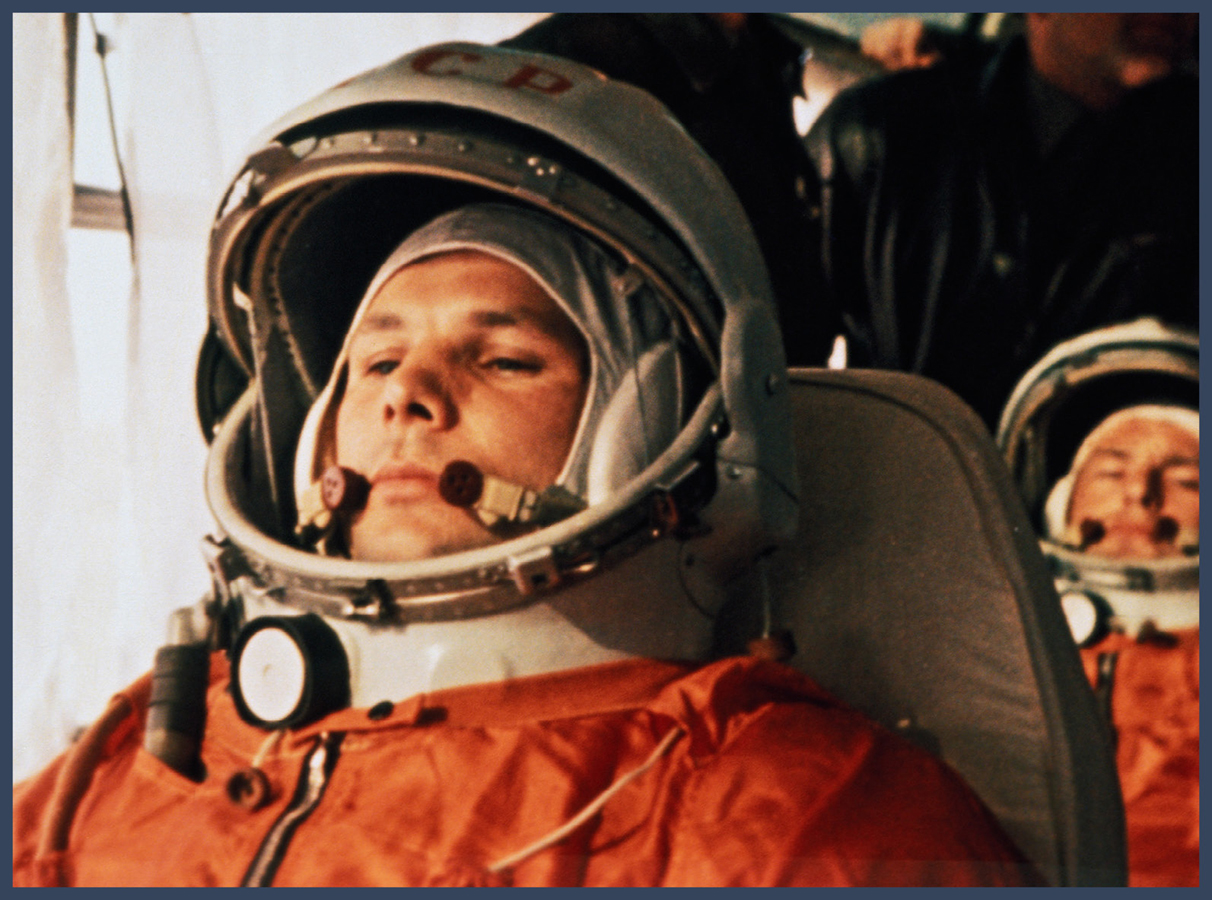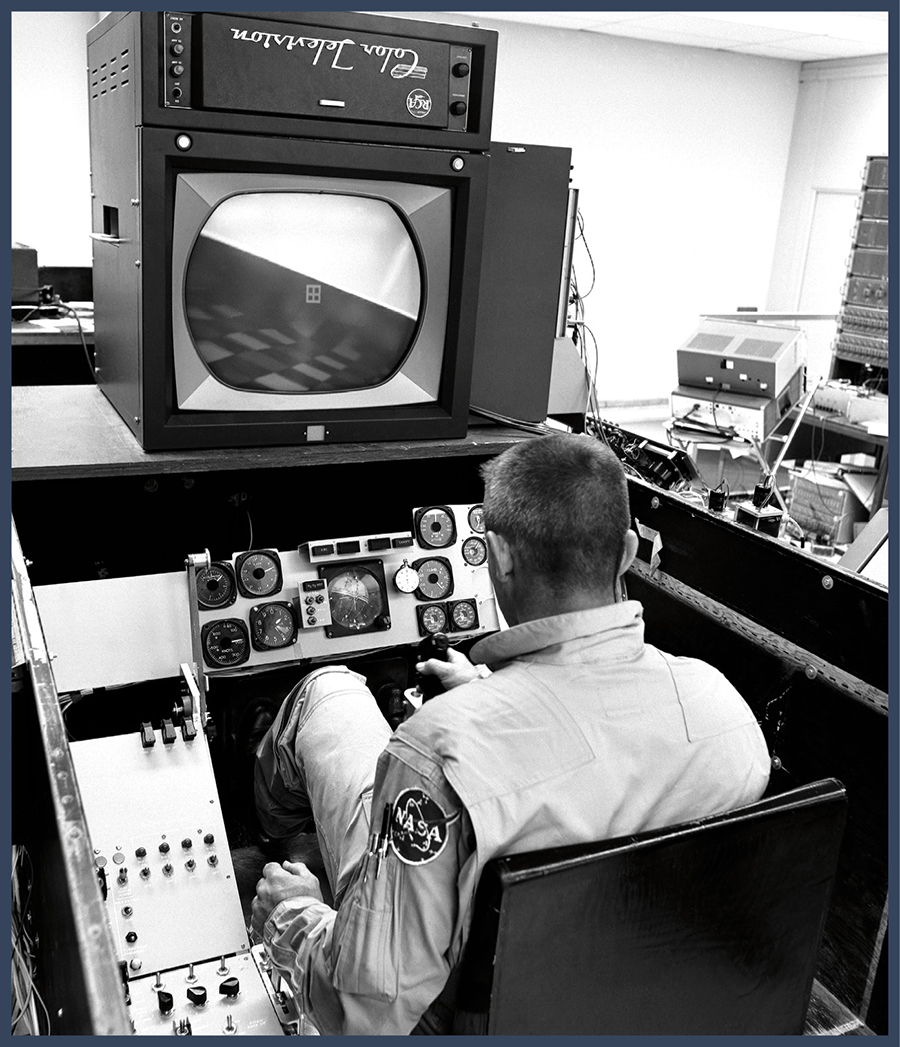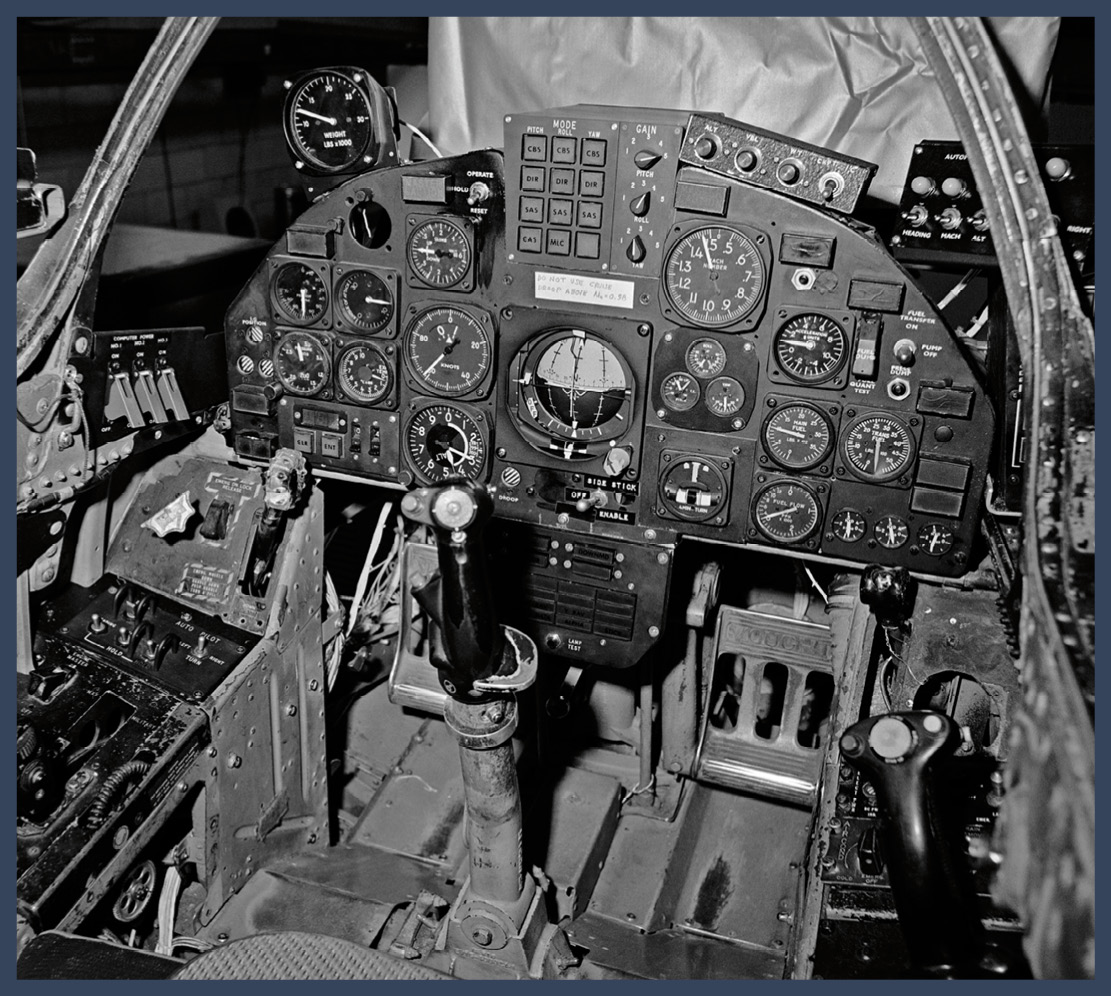For the best You Choose experience,
view in portrait (vertical) orientation.
ABOUT YOUR ADVENTURE
YOU are living in the mid-1900s, a time of amazing breakthroughs in space exploration. People around the world watch as the United States tries to land astronauts on the moon.
In this book youll explore how the choices people made meant the difference between life and death. The events youll experience happened to real people.
Chapter One sets the scene. Then you choose which path to read. Follow the links at the bottom of each page as you read the stories. The decisions you make will change your outcome. After you finish one path, go back and read the others for new perspectives and more adventures. Use your device's back buttons or page navigation to jump back to your last choice.
YOU CHOOSE the path you take through history.
CHAPTER 1
AN IMPOSSIBLE DREAM
You are an American in the 1960s. The United States and the Soviet Union have been in a space race since the end of World War II. In 1957 the Soviet Union launched a satellite called Sputnik. Since then, the two superpowers have increased their efforts to prove they have the best technology by attempting more and more daring feats in space.
In April 1961, the Soviet Union sends Yuri Gagarin into orbit around Earth in the tiny Vostok spacecraft. Gagarin becomes the first person in space. After one complete orbit around Earth, he lands safely.
Yuri Gagarin (front)
Less than a month later, on May 5, 1961, millions of people watch on live TV as Alan Shepard becomes the first American in space. The Freedom 7 space capsule carried Shepard to an altitude of 116 miles (187 kilometers) for a 15-minute flight.
Afraid that the Soviets could gain superiority in the area of space technology, the U.S. government begins a program to develop more powerful rockets. When President John F. Kennedy addresses Congress on May 25, 1961, he sets an ambitious goal. I believe that this nation should commit itself to achieving the goal, before this decade is out, of landing a man on the moon and returning him safely to the Earth. The finish line in the space race has been set.
With great urgency, the United States sets to work to learn how to get to space, live in space, and travel farther than anyone ever has. But Kennedy was right when he said, no single space project in this period will be more impressive to mankind and none will be so difficult or expensive to accomplish.
The new space program first begins flying more missions in Earth orbit. These Mercury missions are the countrys first flights into space. They test technology to get astronauts into Earth orbit and return safely to Earth. Then the Gemini missions test the skills needed to go the moon. These missions have astronauts spend more time in space. They work on space walks and practice docking spacecraft together in space.
Finally, in 1966, Project Apollo begins. The first Apollo flights are unmanned tests of the huge Saturn V rocket, the only rocket powerful enough to send astronauts to the moon. These flights also test the lunar lander, the only spacecraft designed to fly in space and land on the moon.
Engineers and technicians put rockets such as the Saturn V through hundreds of hours of rough testing.
You are excited to be involved with something as big and historic as a moon landing. Its an exciting age of space discovery and exploration, and you want to be a part of it.
CHAPTER 2
TRAINING FOR A DREAM MISSION
The moon launch is going smoothly so far. You watch your computer console from Mission Control at the Manned Spaceflight Center in Houston, Texas. The data tell you that the rockets engine is performing normally. The flight controllers also carefully watch the data.
As the rockets next stage ignites, one of the controllers says, We have a leak in the CSM propulsion system. Fuel is slowly leaking out of the Command and Service (CSM), which would be the last stage to fire to send the astronauts to the moon. The team monitors the rate of the leak, but the launch continues.
Pilots and engineers used early simulators to train for how spacecraft would handle at various speeds and altitudes.
Suddenly, the engine shuts down. The Flight Dynamics Officer (FIDO), a flight controller who monitors the flight path, has two choices. He can instruct the astronauts to ignite the CSM engine to put them into orbit around Earth. They could then plan re-entry. Or, he could use the CSM engine to have the spacecraft splash down right away in the Atlantic Ocean. But because of the fuel leak, they arent sure whether the engine has enough fuel.
You watch the FIDO try to decide which option to take. The spacecraft is moving at such a high speed that it travels 5 miles (8 km) for every second he delays. The flight director, who leads the flight controllers, steps in and orders an immediate to land in the Atlantic Ocean. The decision is too late. The crew lands in Africas Atlas Mountains. The capsules parachutes fail to open, and the crew is killed.
Good thing this isnt a real mission. It was a computer . The flight controllers and astronauts performed several of these simulations to practice for the real moon missions. In this simulation, the crew would have died because of a delay in making a decision. The team learns from this mistake and works harder to make sure something like this would never happen in the real mission.
A manned mission to the moon will be the most complicated engineering task in history. It all has to go perfectly. It will take a lot of training.
You work on the team that plans what the astronauts and flight controllers will do during simulations. It feels a little weird to think of it this way, but your job is to try to make the team fail.
You throw problems at the team and try to kill the crew! Of course, this is to give them the chance to face these dangers in the safety of a simulated spacecraft sitting on the ground, controlled by computers.
The simulations are very realistic. Everyone takes them seriously. They treat them as though they were real flights. The team feels real tension during emergencies. This is the only way to know what the real mission would actually be like.
NASA converted the cockpits of military aircraft for use as early flight simulators.
You have been working for several weeks on simulations, and the flight controllers and astronauts are learning what to do in all kinds of emergencies. They have had some successful missions in the simulators. The simulation supervisor (SimSup), who leads your team, decides its time to challenge the trainees more.
The SimSup says, Lets give the astronauts an unrelated problem during the landing to see if theyre paying attention. You have just the problem already in mind.


